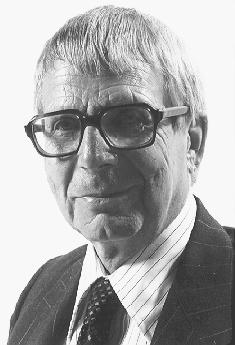<Back to Index>
- Mathematician Lars Valerian Ahlfors, 1907
- Architect Jan Kaplický, 1937
- Président de la République Française Louis-Adolphe Thiers, 1797

Lars Valerian Ahlfors (18 April 1907 – 11 October 1996) was a Finnish-born mathematician, remembered for his work in the field of Riemann surfaces and his text on complex analysis.
Ahlfors was born in Helsinki, Finland. His mother, Sievä Helander, died at his birth. His father, Axel Ahlfors, was a Professor of Engineering at the Helsinki University of Technology. The Ahlfors family was Swedish speaking, so he first attended a private school where all classes were taught in Swedish. Ahlfors studied at University of Helsinki from 1924, graduating in 1928 having studied under Ernst Lindelöf and Rolf Nevanlinna. He assisted Nevanlinna in 1929 with his work on Denjoy's conjecture on the number of asymptotic values of an entire function. He completed his doctorate from the University of Helsinki in 1930.
Ahlfors worked as an associate professor at the University of Helsinki from 1933 to 1936. In 1936 he was one of the first two people to be awarded the Fields Medal. In 1935 Ahlfors visited Harvard University. He returned to Finland in 1938 to take up a professorship at the University of Helsinki. The outbreak of war led to problems although Ahlfors was unfit for military service. He was offered a post at the Swiss Federal Institute of Technology at Zurich in 1944 and finally managed to travel there in March 1945. He did not enjoy his time in Switzerland and jumped at a chance to leave, returning to work at Harvard where he remained until he retired in 1977; he was William Caspar Graustein Professor of Mathematics from 1964. He was awarded the Wihuri Prize in 1968 and the Wolf Prize in Mathematics in 1981.
His book Complex Analysis (1953) is the classic text on the subject and is almost certainly referenced in any more recent text which makes heavy use of complex analysis. Ahlfors wrote several other significant books, including Riemann surfaces (1960) and Conformal invariants (1973). He made decisive contributions to meromorphic curves, value distribution theory, Riemann surfaces, conformal geometry, quasiconformal mappings and other areas during his career.
In 1933, he married Erna Lehnert, an Austrian who with her parents had first settled in Sweden and then in Finland. The couple had three daughters.